Directly across the road from our new “nest”, are two Buddhist temples (wats). Down the road there are three more. Luang Prabang has 32 wats in all, and an approximate population of 1000 monks and novices. For a town the size of Luang Prabang, this means that orange and saffron-clad monks provide a dominant “color” in the community. Both literally, in terms of the color orange and figuratively, in terms of the importance of Buddhism in Luang Prabang. This explains why Luang Prabang is considered the spiritual heart of Laos.
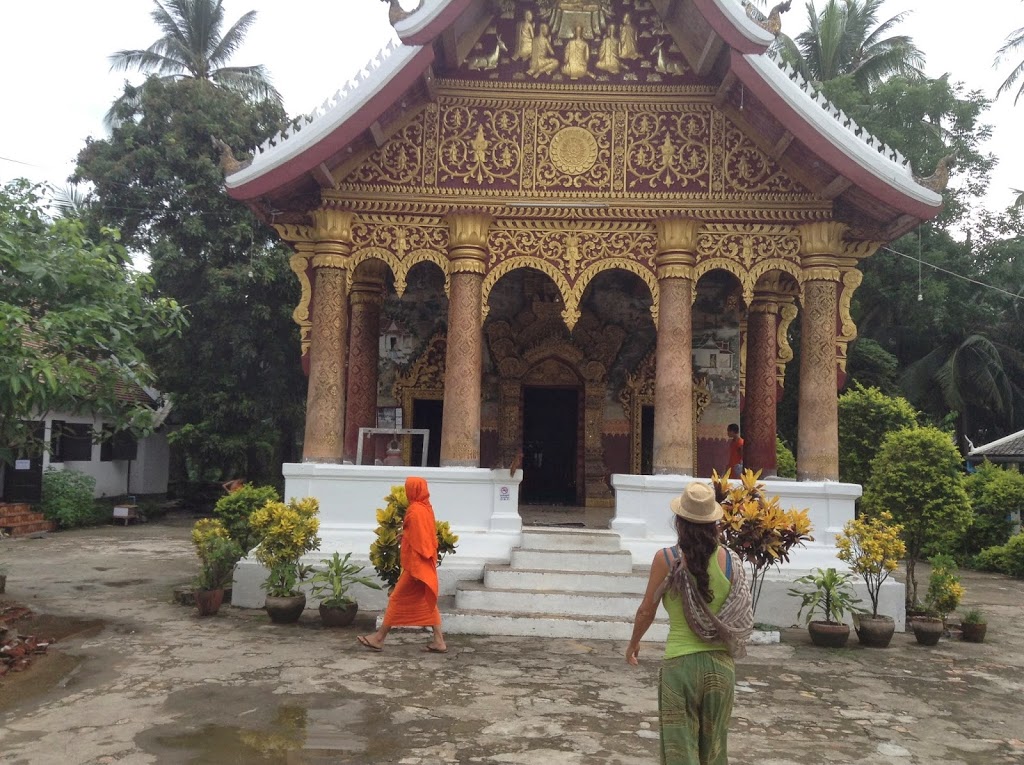 |
| Walking across the street to see what our new neighbors are up to… The sound of the drum calls Buddhists to the wat for chanting at dusk. |
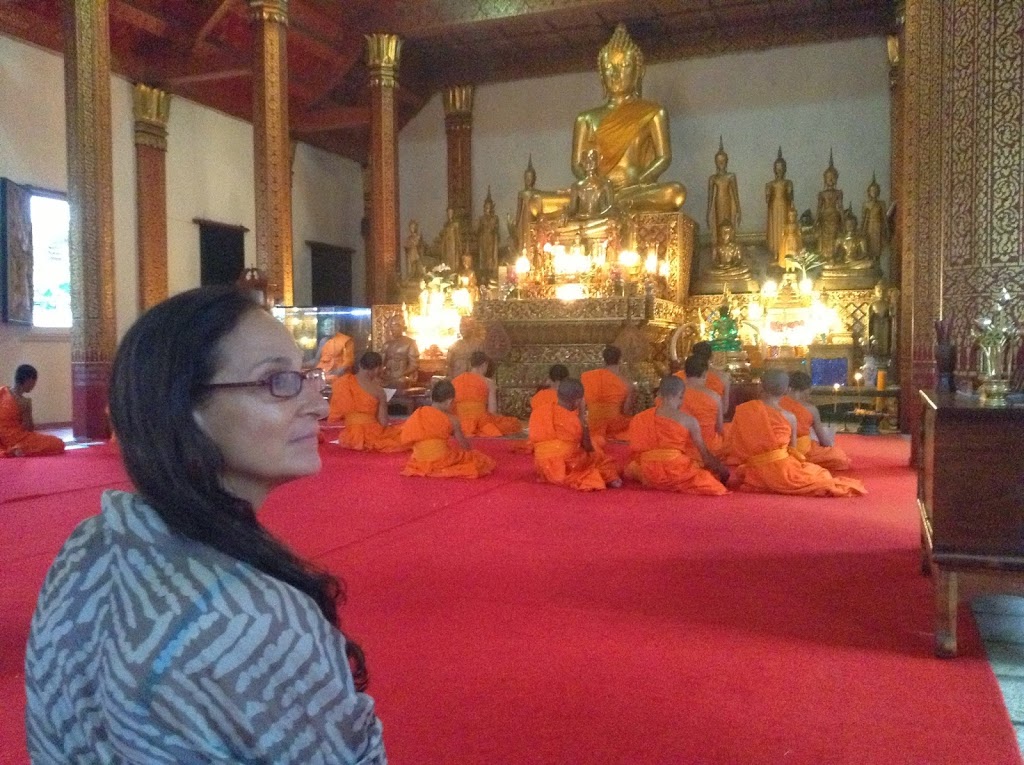 |
| The nightly chanting is hypnotic and captivating. A beautiful way to meditate. |
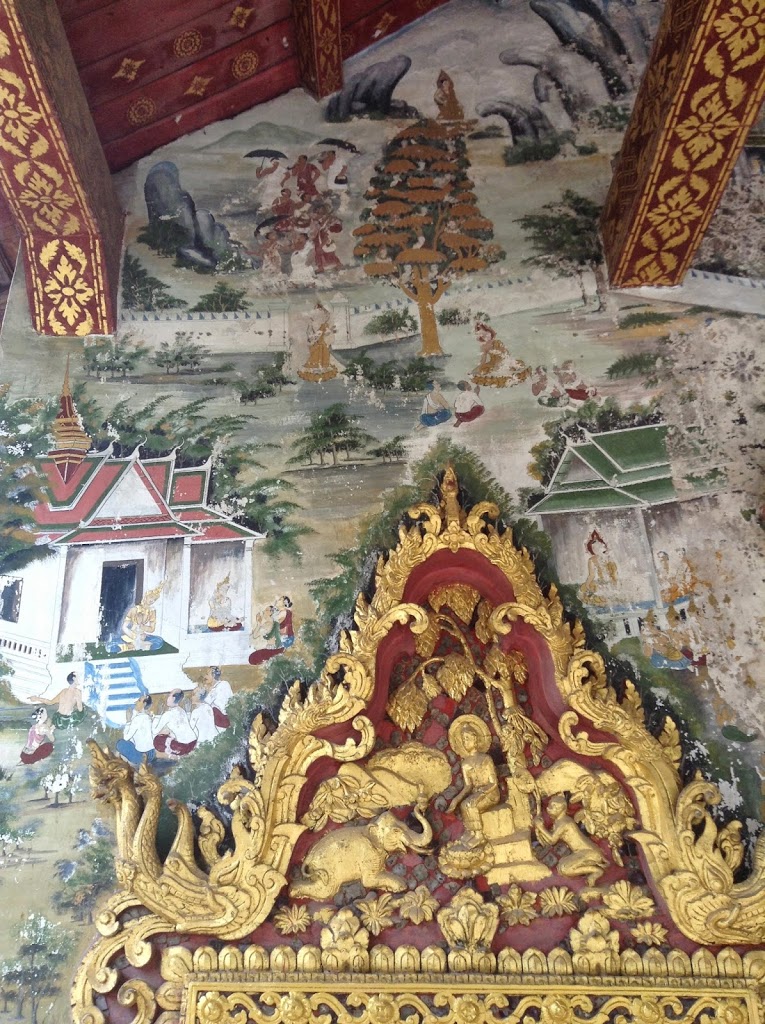 |
| The wat across the road has painting classes and woodwork classes for novices to learn how to restore their temple. This mural around the gilded doorway illustrates Buddhist life in the wat. |
Every morning, around 4:30 a.m., the rhythmic beat of the temple drums has gently infiltrated our sleep and dreams.
 |
| Checking out one of the drums up close. The surface is a piece of buffalo hide stretched tightly. The drum is huge! |
We have looked through our window on the 2nd floor, to see our monk and novice neighbors start their daily alms walk, at 5 a.m. just below us and then we go back to sleep. (We are both “night owls”, so going to sleep at 1 or 2 a.m. is not very compatible with waking up at 5 a.m!)
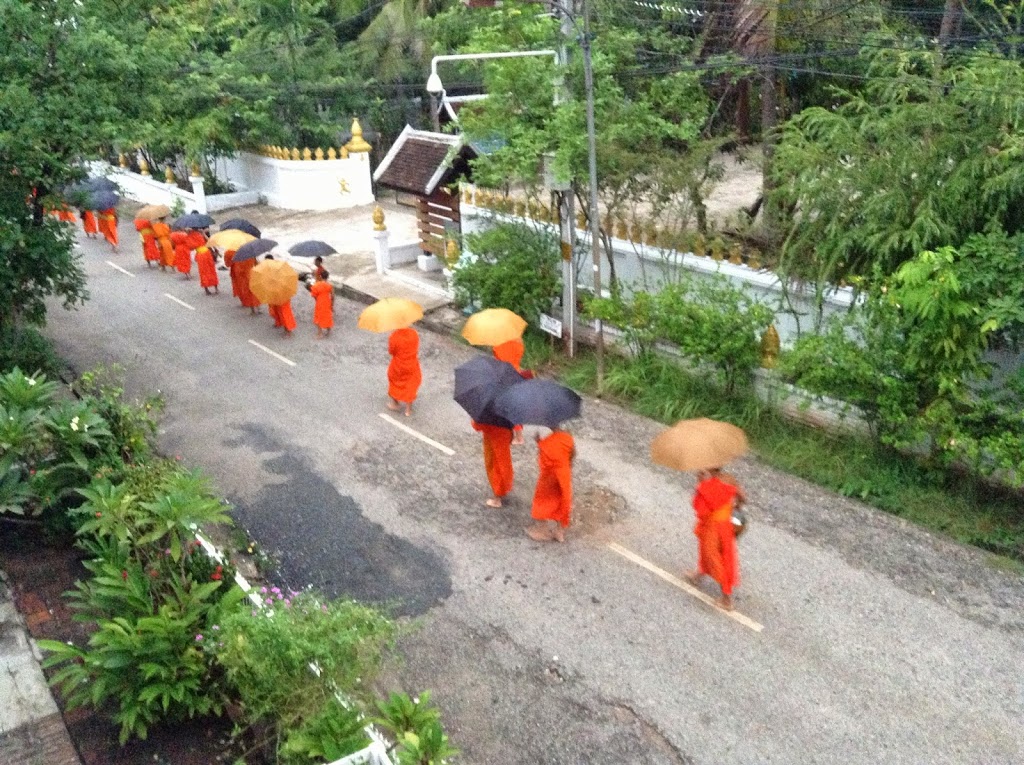 |
| This is the view from our bedroom window every morning as the monks and novices head out for alms. On this particular day, rain is in the forecast. |
Today, July 11th, full moon, we get up at 5 a.m. as daylight slowly creeps through the morning mist and join the townspeople in their participation of alms giving for this important day of Khao Phansa, which is the start of Buddhist Lent.
There is probably no better way to illustrate the intricately woven fabric between wats and monks, and the lay people of the town, than what can be seen on Khao Phansa. The first day of Buddhist Lent is when monks enter a three-month retreat that coincides with the rainy season. The Buddha’s instructions for monks to not travel and stay in their monastery for this period, stems from the observation that in the rainy season, travel through muddy roads is difficult, and many ants can be trampled upon by traveling monks. That would of course not be a good thing from the Buddhist belief in multiple rebirths – and so it was decreed that monks would enter a contemplative, sedentary period during the rainy season.
To launch this period of contemplation, monks and novices start with the daily “alms receiving” practice (tak bat) of walking barefoot, silently, mindfully on a route that takes them through the center of town to receive the town’s lay people’s contribution.
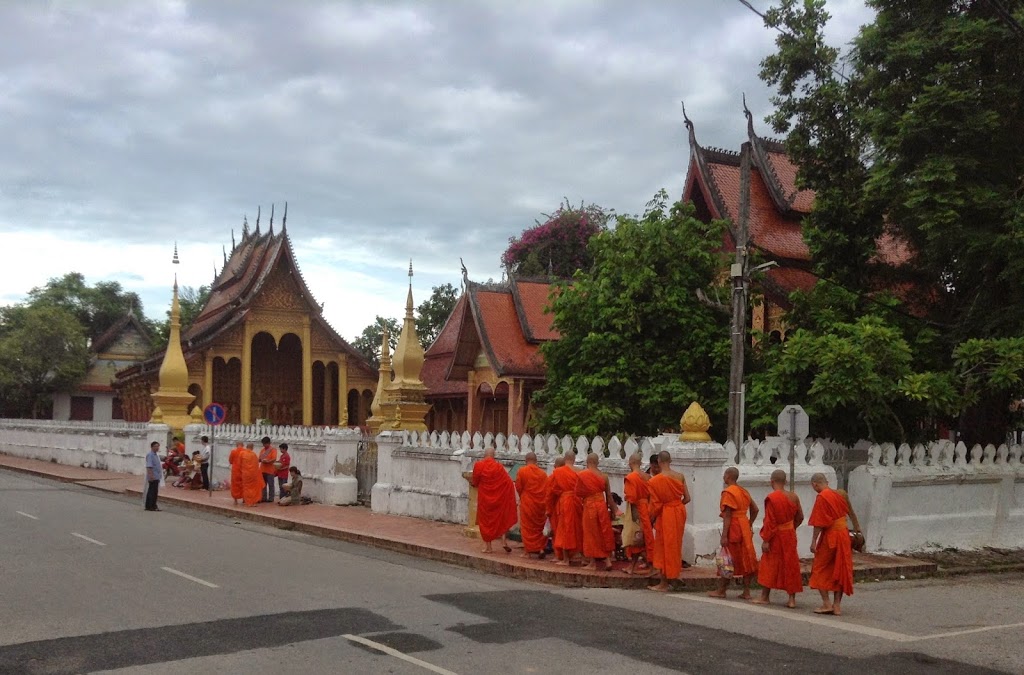 |
| A beautiful flash of orange passes in front of one of the majestic wats on the main street in Luang Prabang. |
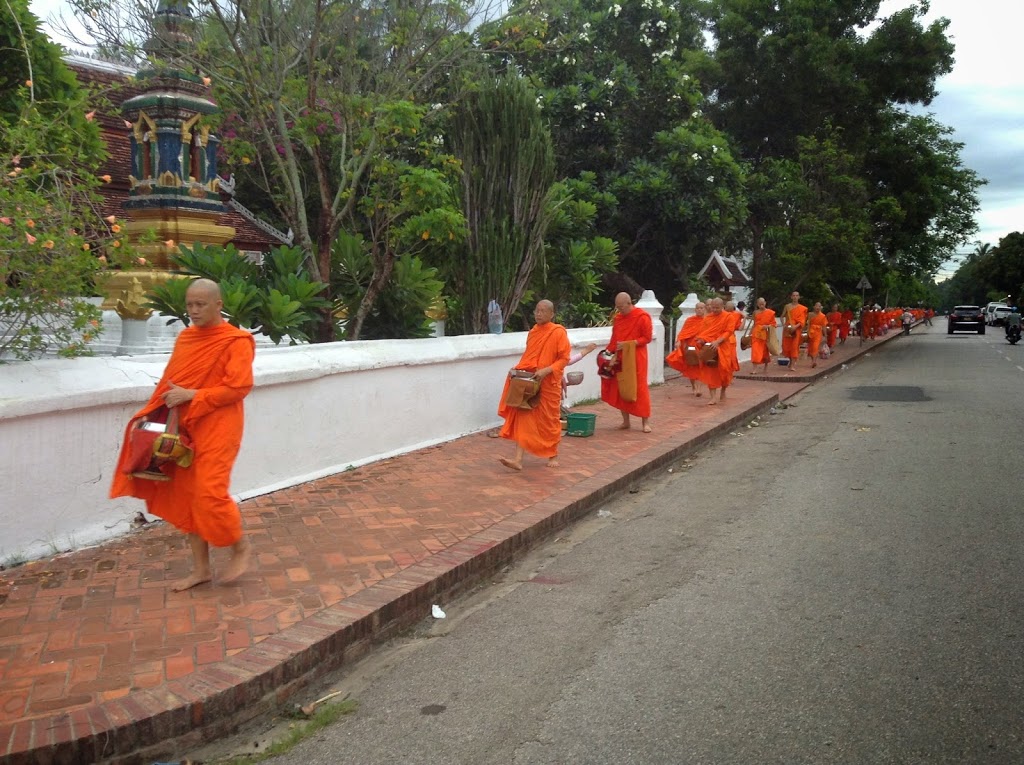 |
| Each monk holds a copper bowl to receive sticky rice (primarily) and any other foods the lay people may have cooked for them. The monks and novices get their heads shaved every full moon. |
While this is a daily practice all year round, on this day the population of participants, both on the monk side and the leity, is highest. Giving alms to the monks gives people “merit” (akin to good karma) and the local population line the streets to participate.
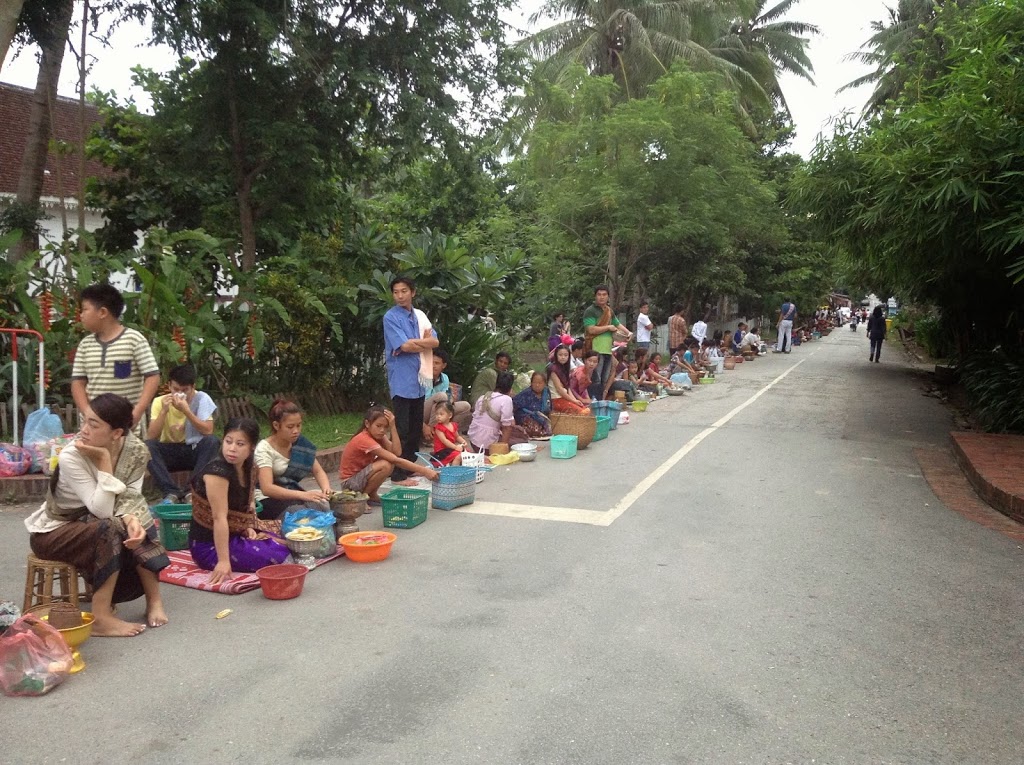 |
| Around the corner from our little apartment, at 5.30 a.m. many residents have set up stools and blankets on which to sit, in wait of the monks arrival. In front of them they have food to be distributed one by one as the monks and novices walk by. Everyone is silent in anticipation, and the silence continues in respect to the reverence of the monks and novices. |
 |
| Women need to sit, their heads lower than the monks, with feet facing behind or to the side. They wear skirts and a sash over their left shoulder. Men can stand for the alms giving. Woven bamboo baskets hold the staple food for Laotians: sticky rice. |
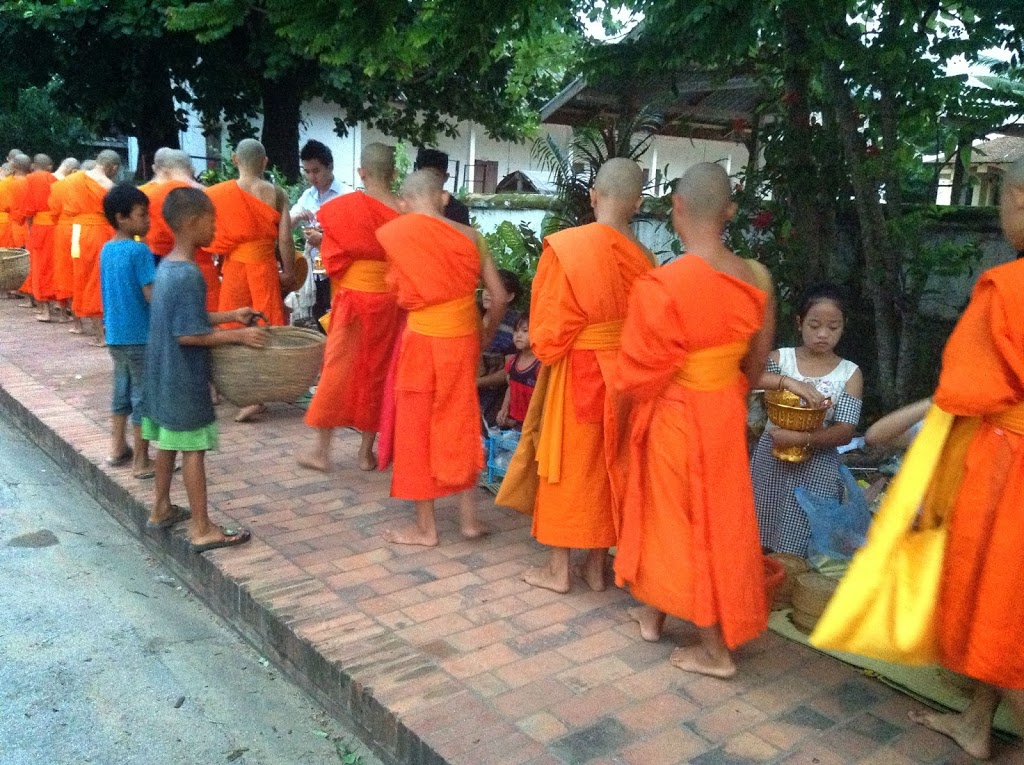 |
| There is a magical aura about the flow of orange robes, shaven heads, bare feet and the atmosphere of silence that permeate. |
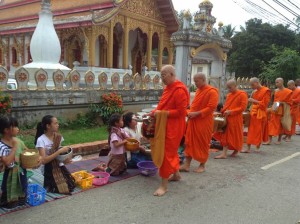 |
| The most senior monks lead the way, with the youngest at the end of the line from each temple. |
The Alms Giving ceremony Tak Bat, is a two way affair. While the monks receive alms, it is also an opportunity for them to give to the poorest they encounter along their path. For this reason, one can see monks giving away some of the food they have received, to children and women with their own baskets in front of them.
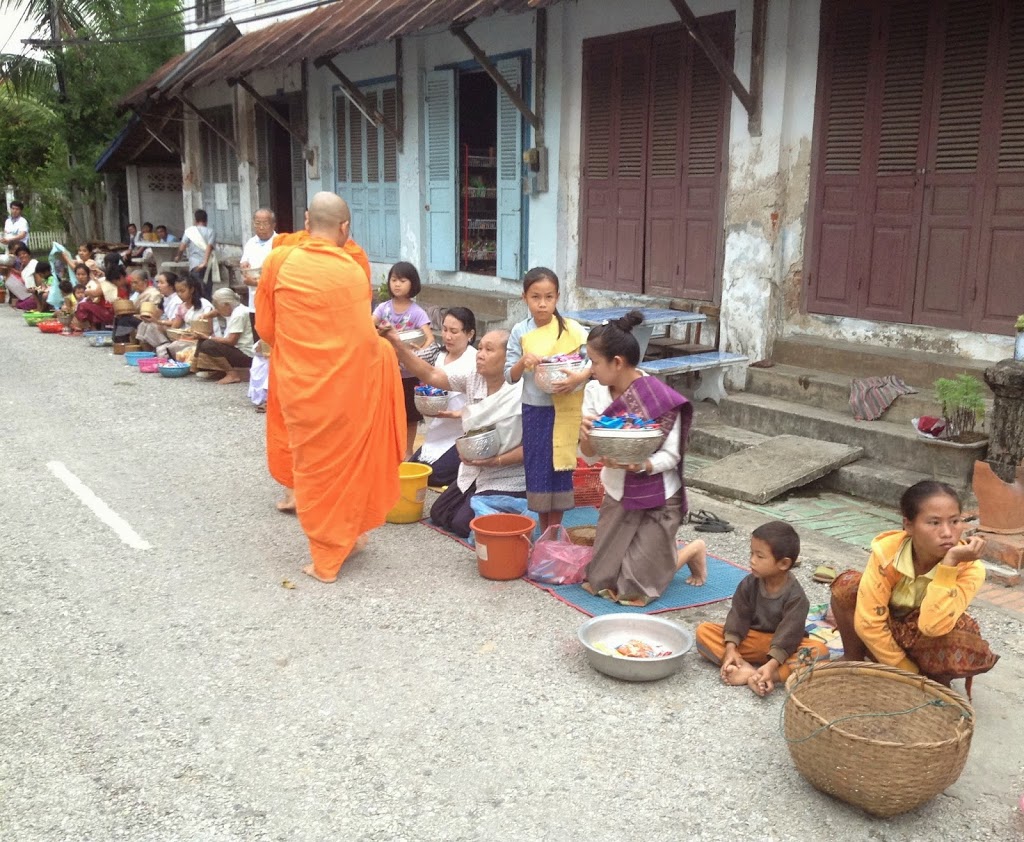 |
| Some of the poorer residents, have their own bowls and baskets to receive gifts of food from the monks and novices. The monks role model the act of giving back. |
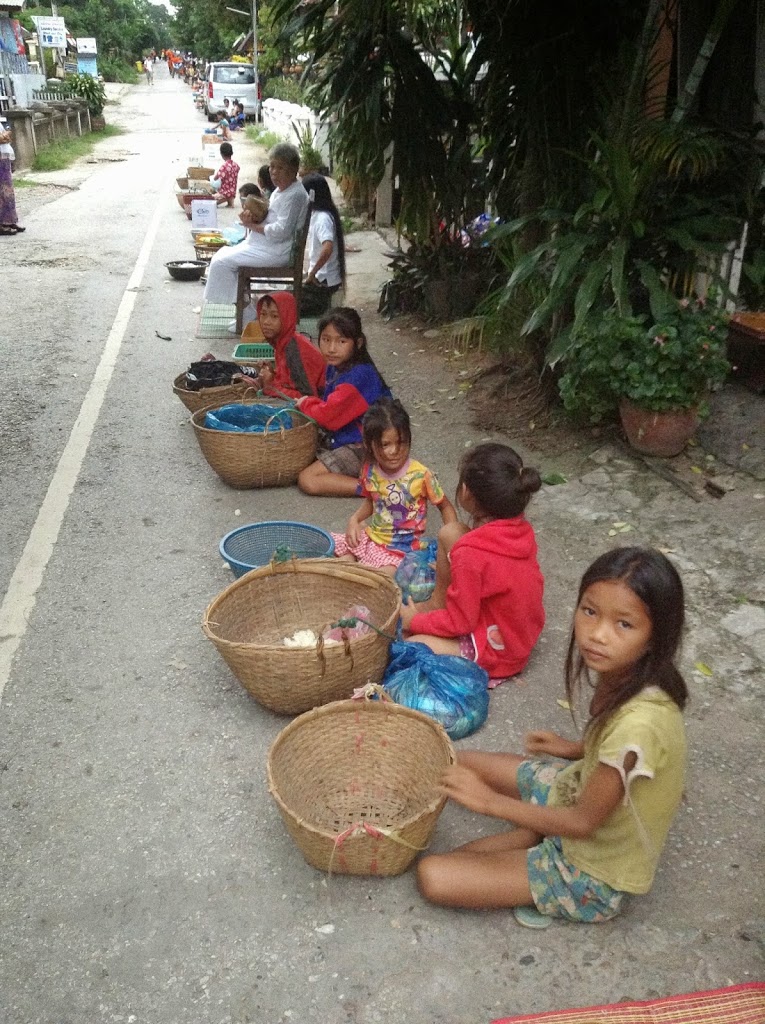 |
| Young girls waiting patiently for the monks to come by so that they can receive food. The monks come in “waves” ~ each walking from their respective temples, on a pre determined route around town. |
 |
| Her bucket is still empty, as the monks have not arrived yet. But she is ready! |
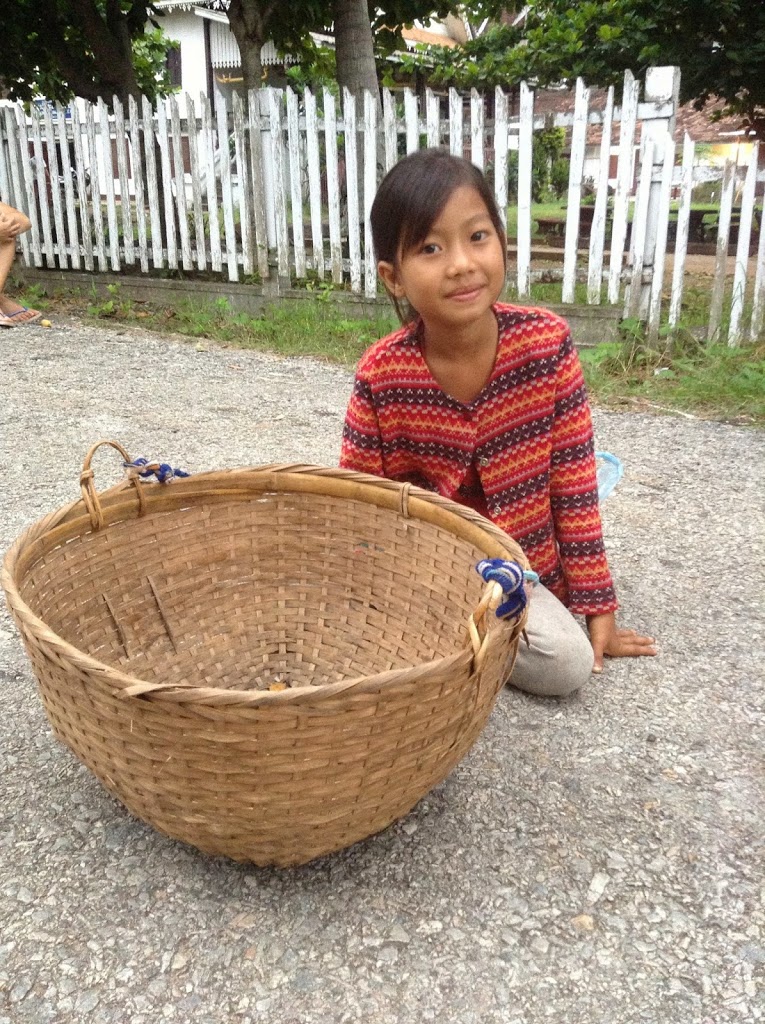 |
| Both adults and children alike are patient, gentle and quick to smile. |
The first day of Buddhist Lent is always on a full moon. This is a day when young Laotian boys enter the monastery, often at the urging of their rural farmer families who cannot afford to pay for their sons’ education (or even have access to it). They also get merit from being a monk, even if for a short period of time and bring merit back to the family.
 |
| Two of the youngest novices, around 7-8 years old receiving alms, on our street. |
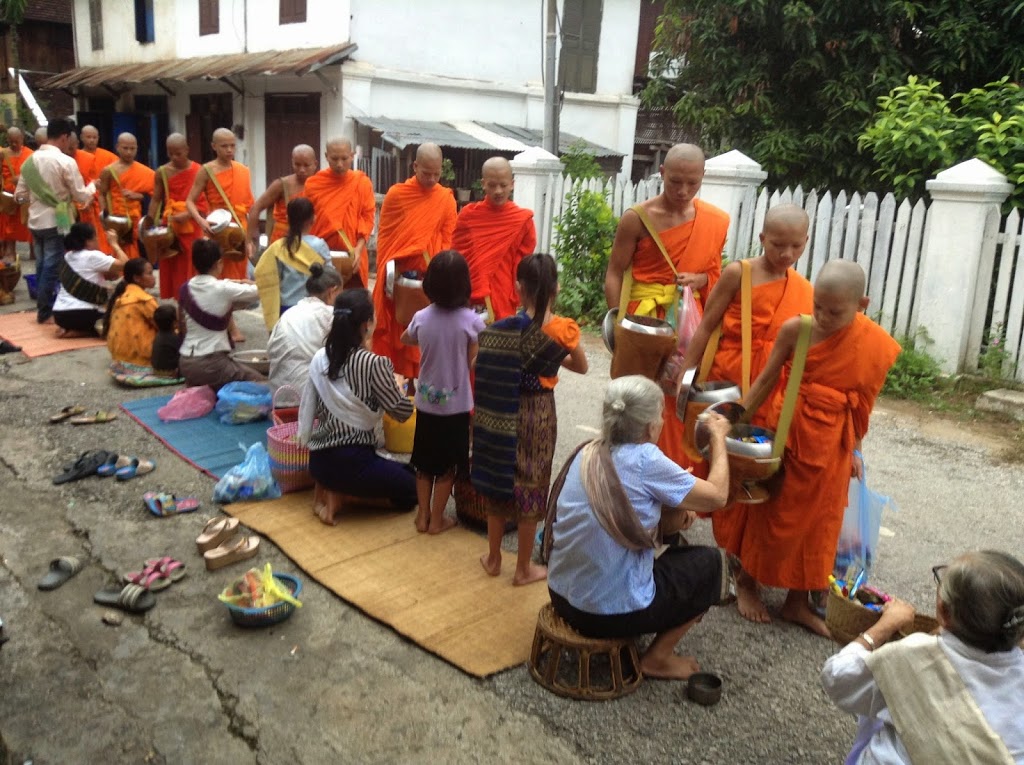 |
| Many of the young novices, in addition to their copper bowls for sticky rice, carry plastic bags in their left hand. These bags are for the modern add on in recent years. of the addition of packets of sweets and treats which are also handed out. |
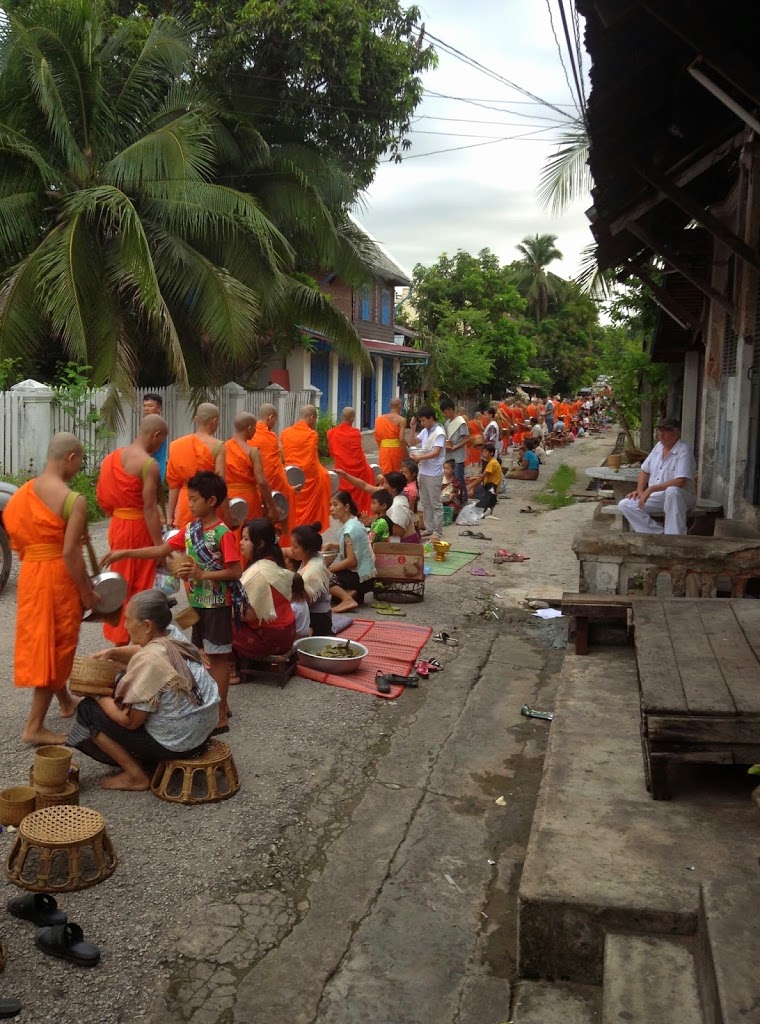 |
| Ben on the right hand side mesmerized by the scene unfolding on our street. |
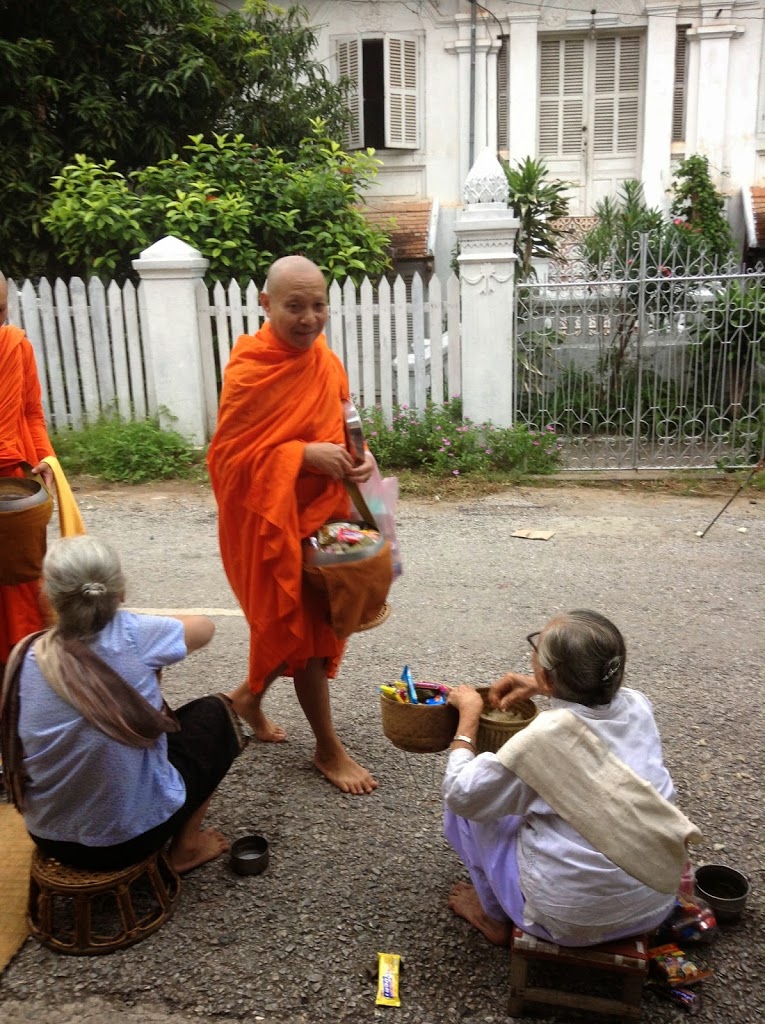 |
| A smile of recognition from a monk to a lay woman. |
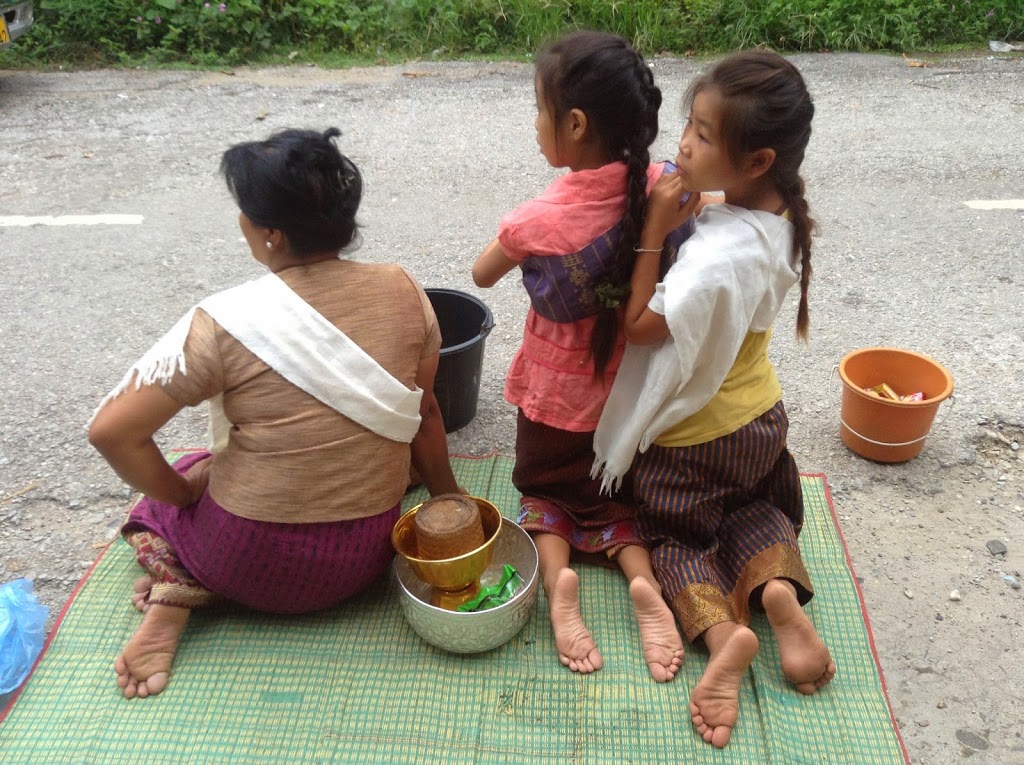 |
| Two little girls, their feet pointing back, their hair braided, their sashes on, eagerly await the arrival of the monks, with their mother. |
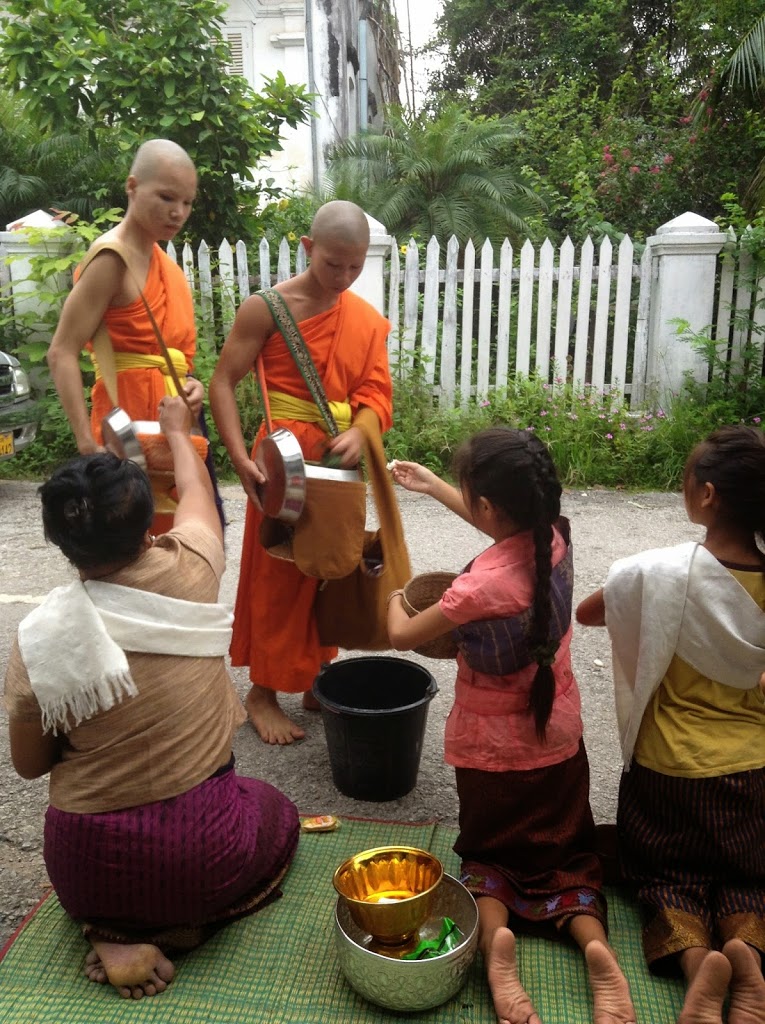 |
| Finally, the monks arrive and sticky rice is scooped out by the handful. |
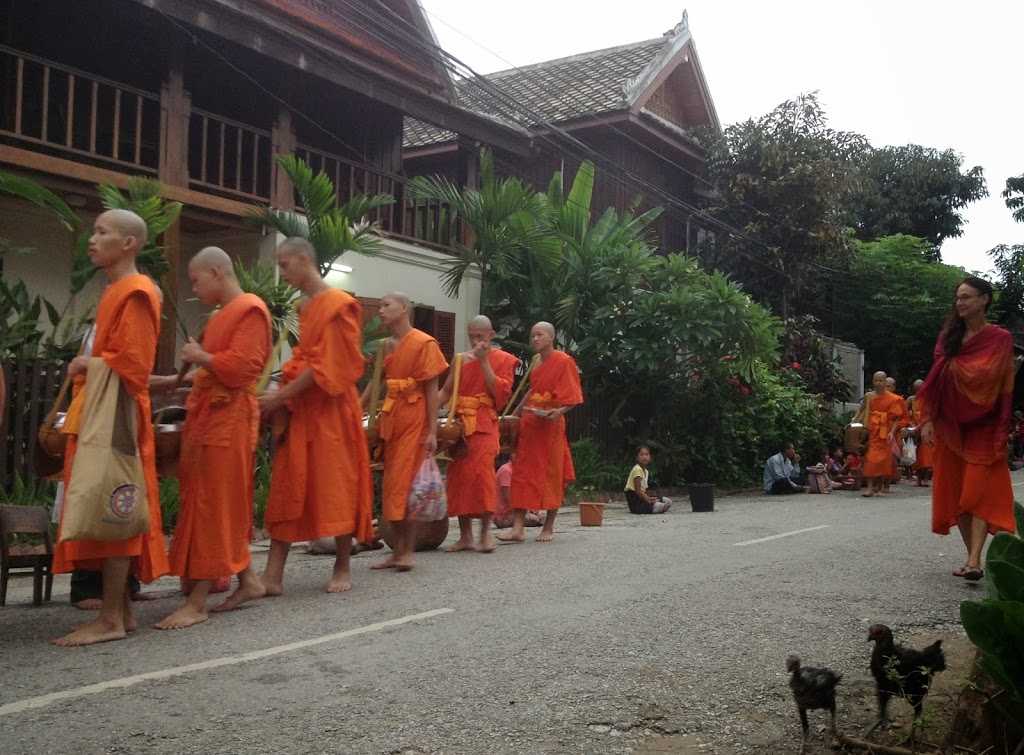 |
| Peta’s cameo appearance, on the right, in her orange colored dress. |
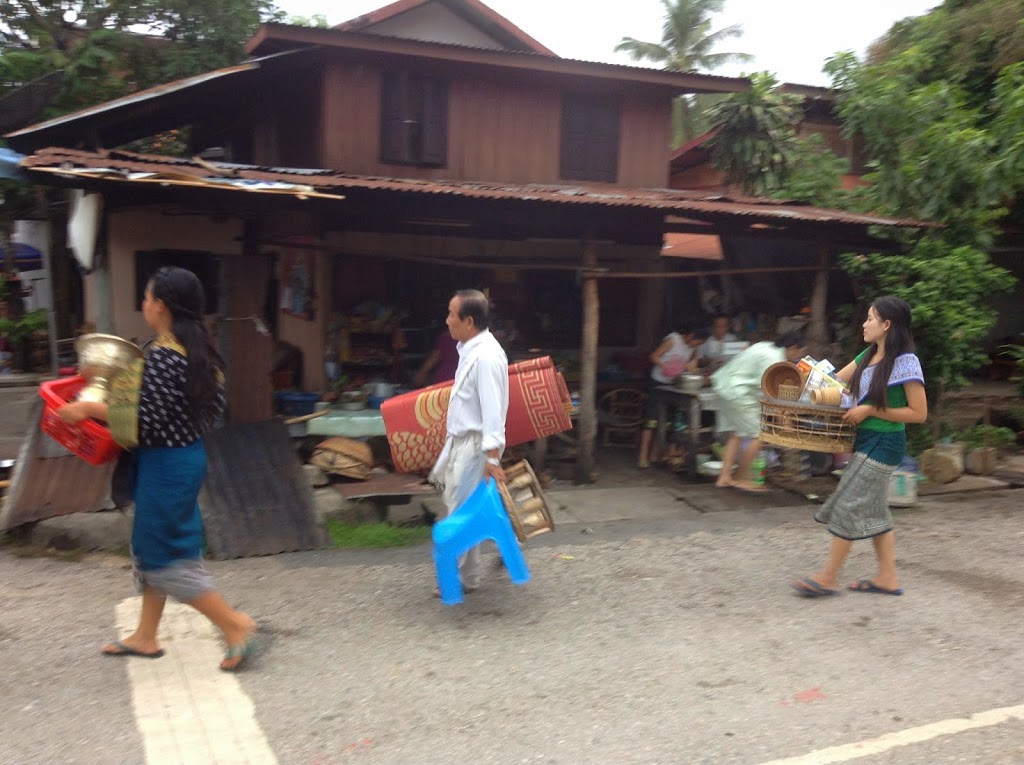 |
| 6.30 a.m., the most important alms giving of the year is over and people carry their stools and small rugs, empty bowls, back home with them. |
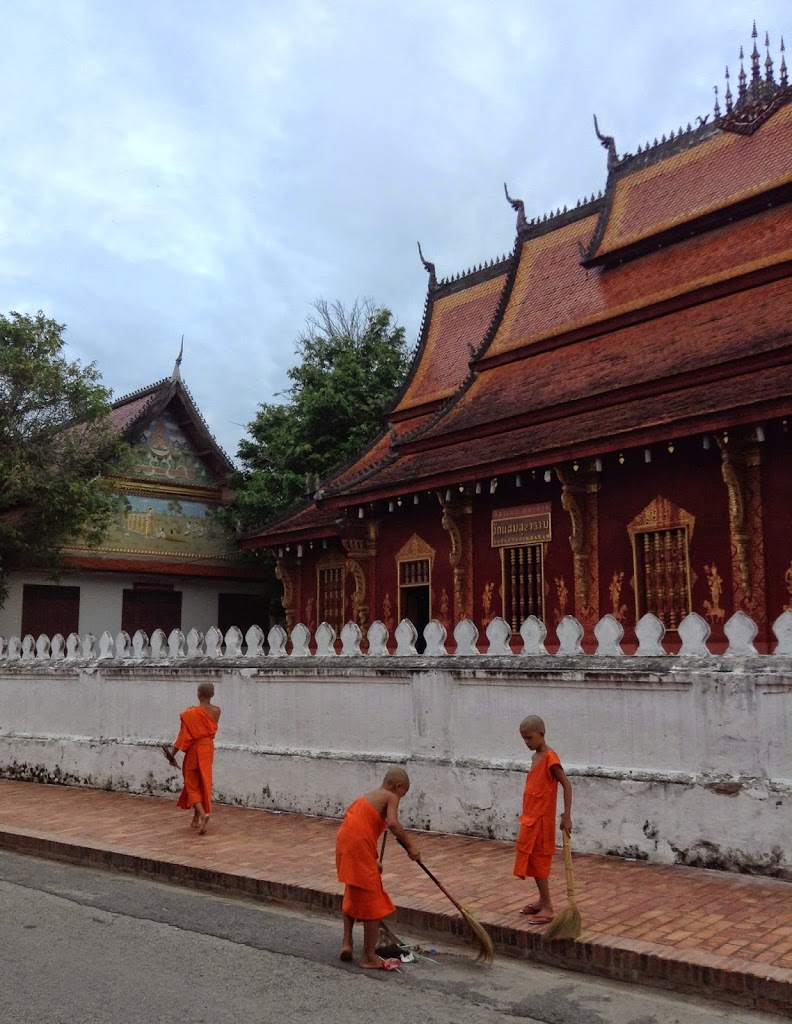 |
| Novices sweep the sidewalk in front of their wat, after the alms giving is over. Sweeping with mindfulness, is one of the jobs of being a novice. |
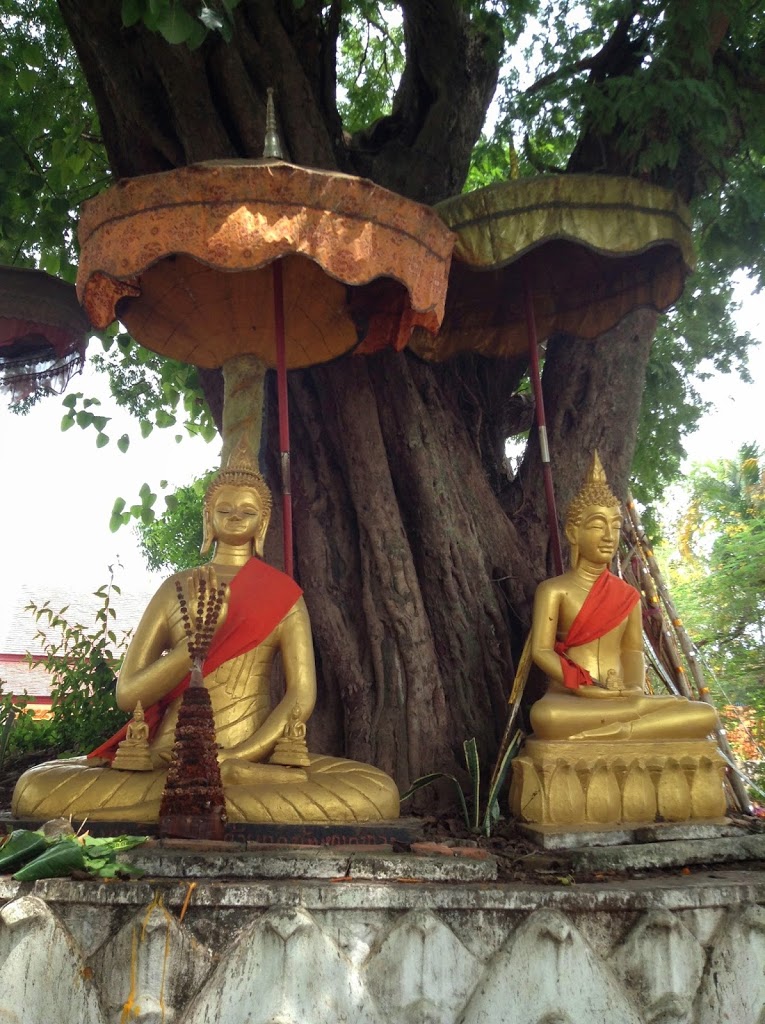 |
| Golden statues of the Buddha, with orange sashes, at the base of a tree outside a temple. |
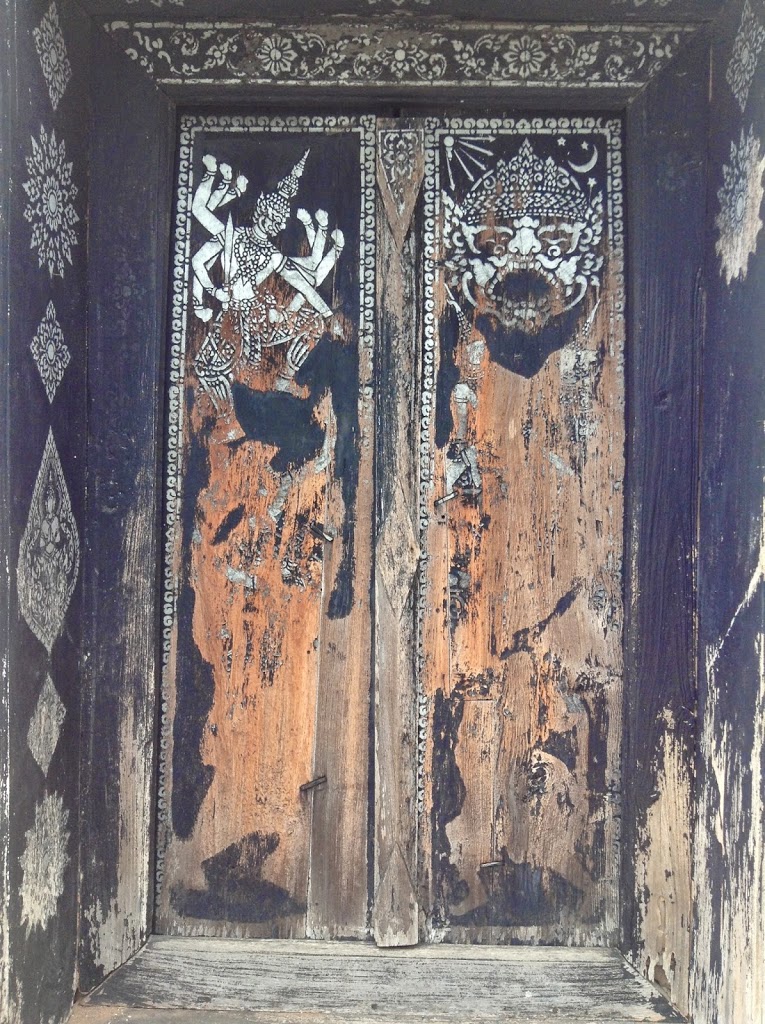 |
| A beautiful worn temple door. |
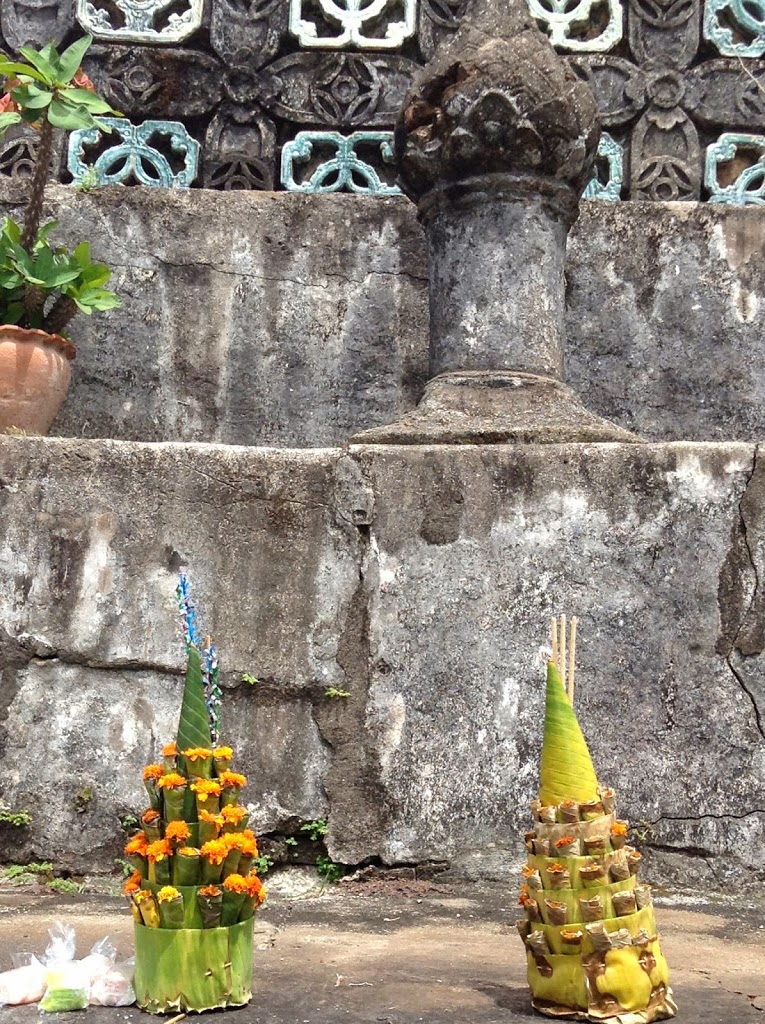 |
| Orange marigold flower offerings. |
 |
| As the sun sets over a wat, the day ends just as it started ~ with the beat of the large barrel temple drum. |




























Love the bright orange robes! Check out this article on why they are orange: http://www.urbandharma.org/udharma10/robe.html
For the most part the robes of the monks depended on the dye that was available in the region. And then tradition just kept those different colors. And it also helps distinguish which sect/tradition/school of Buddhism the monastic follows.
The simplicity of wearing a basic robe partly symbolizes the vow they have taken to live a simple life. It is like their “uniform” in a way. A symbol of their non-status that they are no longer partake in the material aspects of society.
The material and dyes for their robes are usually donated by the laity.
The robe also symbolizes the monks connection to the Buddha and his willingness to follow in his footsteps.
That’s a beautiful custom. Aaron told me that in Myanmar during the military crackdown the monks refused donations from soldiers, turning their bowls upside-down. Huge dis.
Hi Peta and Ben, Love reading about your adventures!
Thanks Julia! Nice to hear from you. Glad you are enjoying reading us.
Pingback: Buddhism in our neighborhood ~ Dalawella, Sri Lanka. – Empty Nesters on a Green Global Trek
Wow! So many more devotees lining your streets here than where I was staying. Magnificent images. I would love to go back.
Lisa I think it was a special offering day and it seemed that everyone was out for the alms. Thanks for the compliment, especially coming from you. We would love to go back too, such a unique place, for sure!
Peta